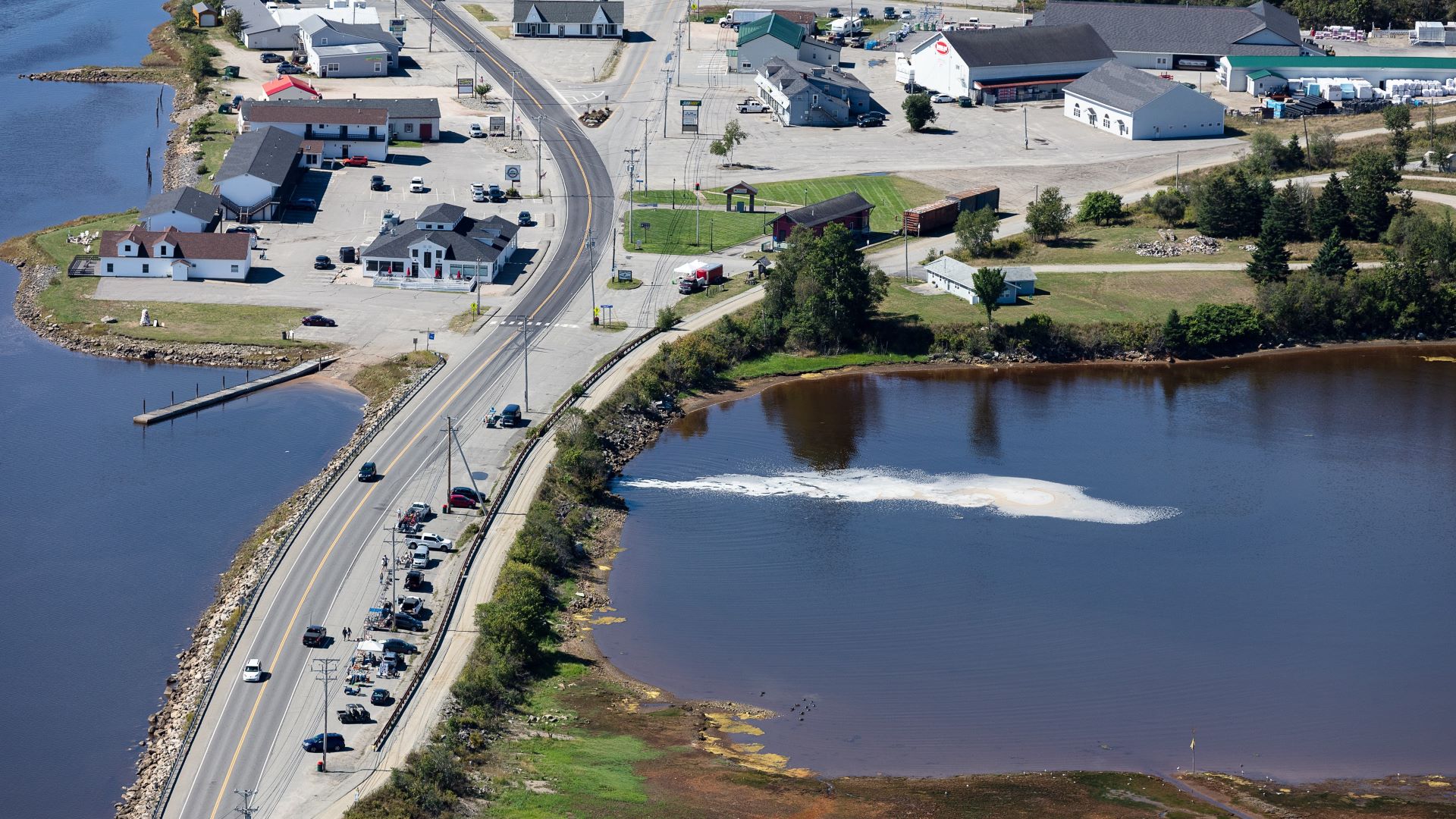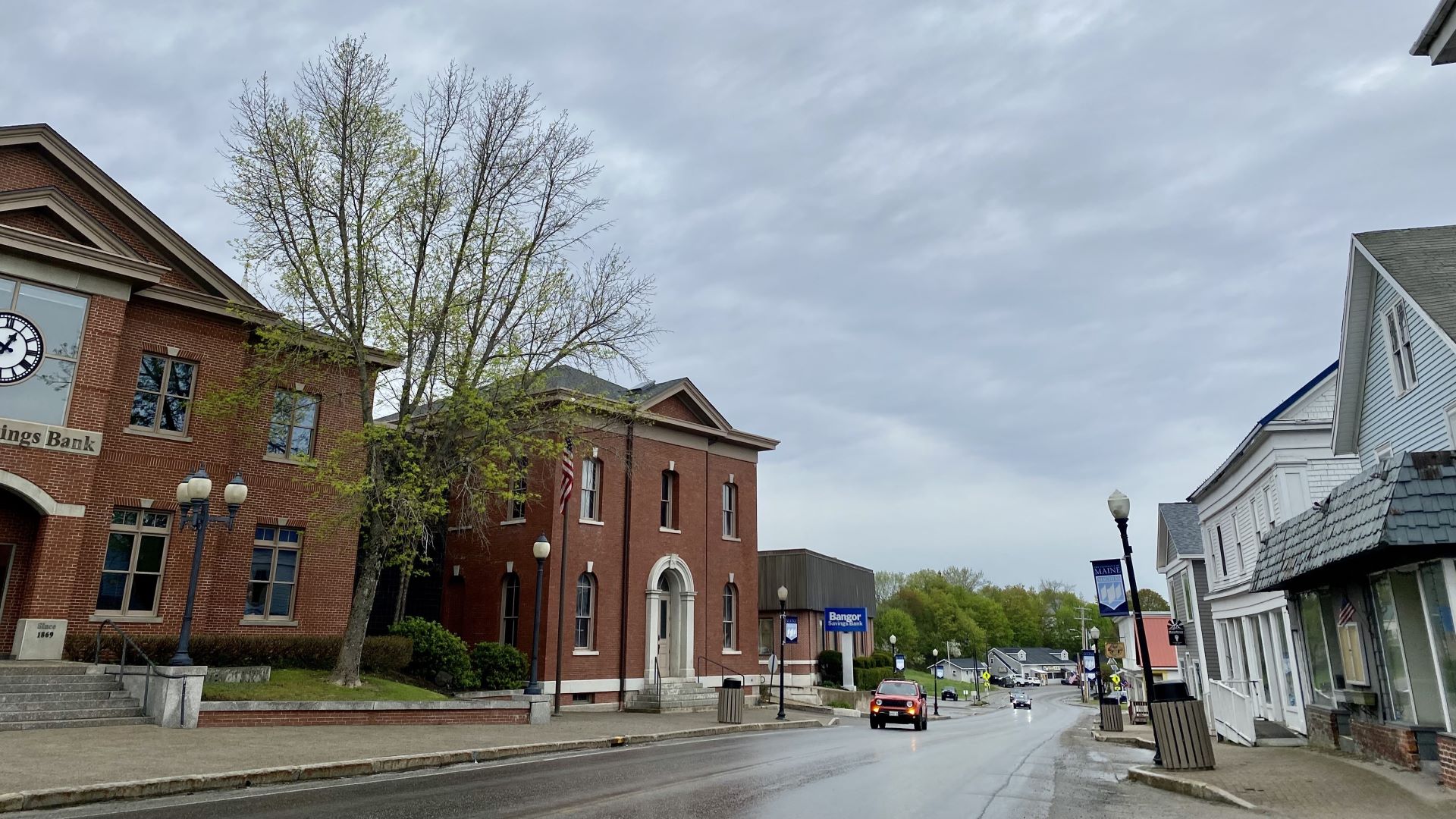When Professor Tora Johnson and her University of Maine at Machias team were preparing an application for a federal grant to help fund a seawall and berms to protect low-lying downtown Machias from floods, it seemed they had a project that fit perfectly with what the Federal Emergency Management Agency funders wanted.
The community, which straddles the Machias River just before it widens into the mouth of Machias Bay, is the county seat and a service center for the 32,000 residents of far-flung Washington County, who come to get gas and groceries, attend medical appointments, send packages, eat out and socialize — “the Shire town,” as Johnson put it in an interview last year.
With much of downtown sitting below base flood elevation, Machias is also extremely vulnerable to flooding and storm surge. Parts of downtown are underwater more and more often, as sea levels rise, and storms hit more frequently and more intensely.
Earlier this month, the Maine Department of Transportation announced it would close a major causeway in the town for repairs, after divers doing a routine inspection found “voids” underneath the dike, which has seen increased flooding in recent years.
The proposal, dubbed the Machias Waterfront Resilience and Renewal project, aimed to change that. The community had already conducted public hearings, surveys and an economic analysis, and gotten some money to raise the elevation of its boat landing over the course of the program.
But when Johnson and her colleagues went to apply for a Pre-Disaster Mitigation grant from FEMA, a program designed to fund projects to protect communities and minimize the damage from natural disasters, they found a problem.
As part of the application process, FEMA asked applicants to use a modeling software called Hazus to estimate the risks Machias faced from flooding and what it would cost to help it recover. The software is meant to help communities estimate the cost to replace a road or rebuild a wastewater treatment plant — information they can then use as part of their application.
There was just one problem: As far as Hazus was concerned, Washington County effectively didn’t exist.
“There were outrageous problems,” said Johnson. “Like there were literally no roads in Washington County.” The smallest sewage treatment plant in Hazus was valued at $10 million, said Johnson — three times the size of the one in Machias. “And on and on and on. There are zillions of these issues, where it’s built for a much larger community.”
So Johnson and her team spent a year and half designing their own risk-modeling software, using the 550-page Hazus manual as a guide, inputting information specific to Washington County. They then had to apply for special permission from FEMA to use the software as part of their application.
“The technical bar is so high,” said Johnson. “It’s really, really tough for us little communities to do this.”
Machias did eventually get the money, with FEMA contributing $200,000 toward the project in 2018 — one of the two Maine projects that got the grant funding that year.

But the experience Johnson and her team underwent is typical of barriers communities around the country face when applying for federal funding, said Anna Weber, a senior policy analyst with the Natural Resources Defense Council, who has analyzed the FEMA grant program.
“It can be really challenging for small communities to apply for these federal grants,” said Weber. “The application process itself is pretty complicated — there’s a lot of requirements you have to fulfill, there’s a lot of eligibility that you have to understand.”
The Hazard Mitigation Assistance program was created decades ago to help communities both recover from natural disasters, and beef up planning and infrastructure to blunt the effects of future floods, fires and storms. Funding for the program has fluctuated, as have the different grants it doles out (the grant Machias applied for has since discontinued and replaced with another with a slightly different name.)
The Building Resilient Infrastructure and Communities grant, which started in 2020, is by far the largest of FEMA’s non-disaster grants, with $2.1 billion in competitive funding available nationwide during the 2022 grant cycle.
Maine, however, got less than 0.5 percent of the 2022 BRIC funding — roughly $9.4 million — for a wastewater treatment plant project in Saco.
It was the state’s first successful BRIC application, and one of just four it has submitted for the nationwide competition since the grant’s inception three years ago.
Maine communities didn’t submit any applications for Flood Mitigation Assistance, another HMA grant aimed at reducing the flood risk for property insured under the National Flood Insurance Program, in that time frame.
Other states have been far more successful applying for funds. An analysis by E&E News published this month found that since 2021, five “superuser” states — California, Florida, New York, North Carolina and Washington state — have together received $2 billion, or half the money allocated through BRIC.
Some have submitted hundreds of project applications over the course of the program, often with the aid of outside consultants — help that’s financially out of reach for many smaller states.
“There’s more funding than there’s ever been before, but it’s not enough for all the adaptation and resilience work that must occur for us to be ready for the next 60 or 80 years,” Victoria Salinas, FEMA associate administrator for resilience, told E&E News.
“That’s one of the critical gaps in this time of historical investments — our ability to help underserved communities develop resiliency plans and technical capacity not just for FEMA (grants) but for other agencies.”
Maine communities have been more successful, said Weber, in getting some of the $2 million FEMA sets aside for each state for “capacity building” — basically, activities that aren’t construction projects, which is part of BRIC but is separate from the nationwide competitive grants like the one Saco was awarded.
Towns aren’t entirely on their own. The Maine Emergency Management Agency, responsible for submitting applications to FEMA on behalf of tribes and local communities, offers technical assistance and webinars (including two upcoming ones in early December) to local planning agencies to help them sort through the process.
The agency, which has several staff members devoted to hazard mitigation planning, also supports towns by making sure county and state mitigation plans, which must be approved by FEMA before communities can apply for funds, are up to date.
“(MEMA) was instrumental in getting us to this point,” said Jessica Larson, a selectman in Cornish, which applied for $13,440 of the $2 million state set-aside to help with planning and mitigation efforts. “I think small towns need to realize there are people that are willing to help.”
Getting the word out is part of the problem: Municipalities often aren’t aware of the grants, and small town planning and select boards are struggling to keep up with an avalanche of tasks and growth.
Identifying and applying for these kinds of funds can take months, and paying for outside consultants is usually out of the question.
FEMA has tried to lower barriers for communities, changing some of its requirements in recent years, in part because it heard from people like Johnson in Machias and others about how difficult it was.
The agency recently came out with an initial list of what it says are the highest-need, most at-risk areas in the United States — including part of Washington County, the only place in Maine to make the list — that are being targeted for special assistance.
“They have changed some of their requirements for grant proposals, which help to lower some barriers,” said Johnson in an email this week. “Others seem to still remain.”







